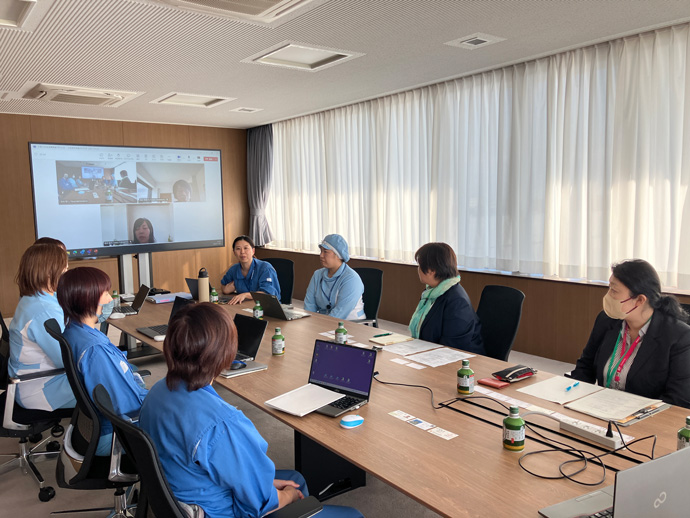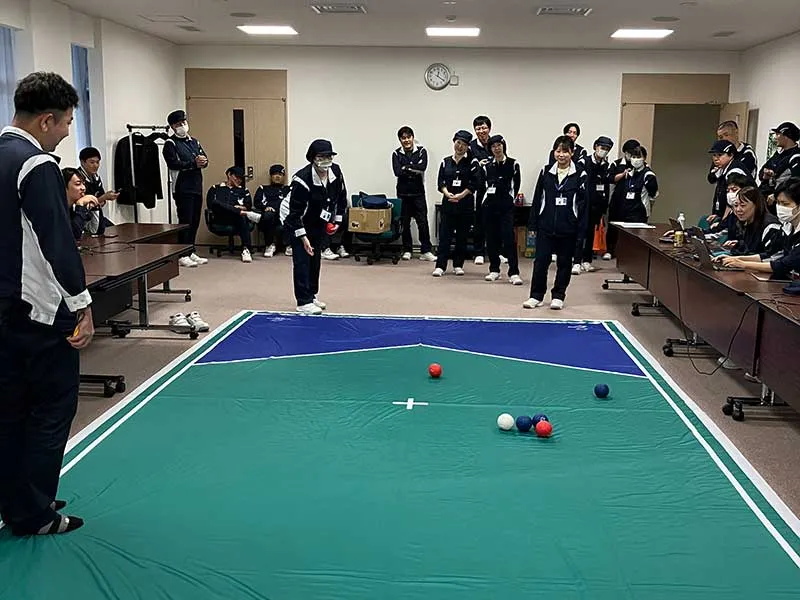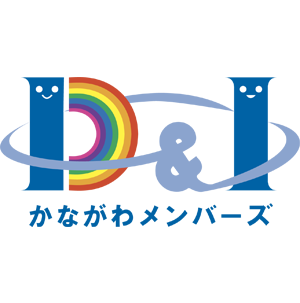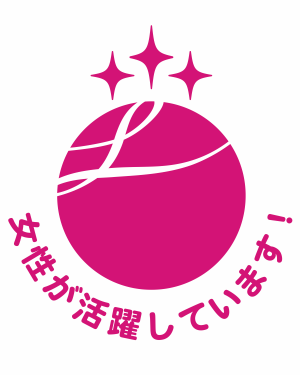Our approach to DE&I
DE&I Message
In order to realize our business philosophy “Helping People Lead Healthier, Happier Lives,” we are seriously committed to “DE&I” with the aim of creating a future of wellbeing for people based on the idea that “unique products come from unique human resources.”
D: Diversity
We respect diversity, accepting differences in gender, age, disability, nationality, and race, as well as values, experience, work style, culture, and sexuality (sexual orientation, gender identity, and gender expression).
E: Equity
We provide fair opportunities and treatment so that all of our people, with diverse attributes and values, can perform at their best.
I: Inclusion
We are driven by the power of our diverse human resources, and each of us pursues uniqueness by seriously facing ourselves, others, and society. And the entire company will grow together as one team and create A New Way of Life.
June 3, 2024
Nippon Shinyaku Co., Ltd.
Toru Nakai, President and CEO
Related Initiatives
Starting in FY2022, we decided to hold DE&I DAY once a year with the aim of deepening our understanding of others with different backgrounds and further enhancing mutual understanding while focusing on the individuality of each person. The concept of DE&I DAY is “Everyone is different and everyone is good!”
Theme
- FY2022: “Learning DE&I from supporting people with disabilities”
- FY2023: “Learning DE&I from LGBTQ”
We will continue to hold DE&I DAY with various themes.
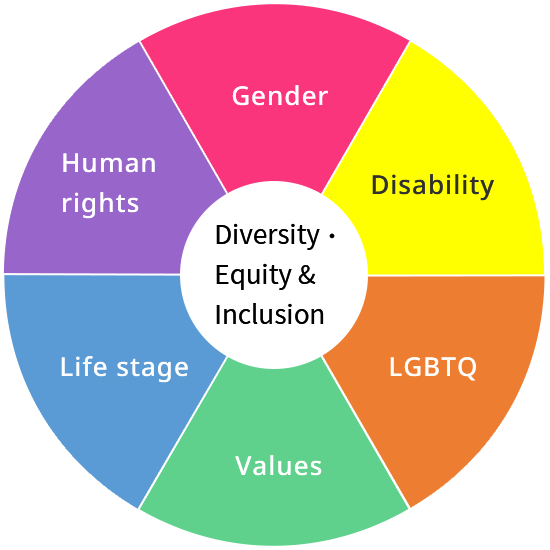
More Active Roles by Women
Since fiscal 2019, Nippon Shinyaku has touted the goal of having 15% or more of managerial positions held by females as part of its “General Employer Action Plan based on the Act on Promotion of Women’s Participation and Advancement in the Workplace.” That goal was met in fiscal 2020, when 15.1% of female employees held management positions. In fiscal 2021, that number rose to 16.1%, indicating that the number of females in managerial and executive
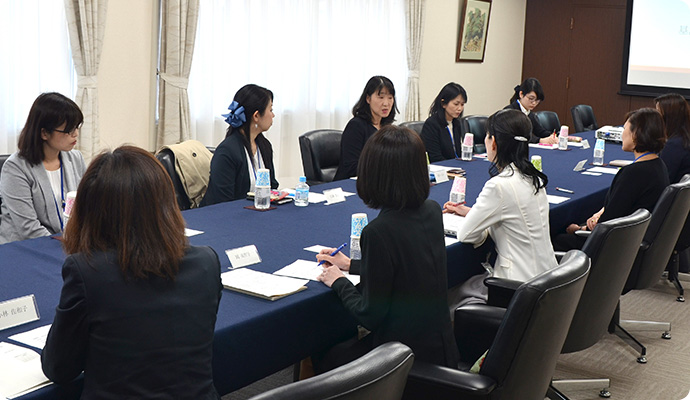
positions is growing every year. Having agreed to the Japan Business Federation (Keidanren)’s #Here We Go 203030” initiative—having females account for at least 30% of directors by 2030—we are aiming to create a workplace environment and organization that makes it possible for various types of human resources, including females, to improve their career.
To achieve various objectives, including increasing the motivation and skills of female employees, in fiscal 2021, we accepted applications from female employees who wanted to take part in training provided by an outside entity for females aiming to become future managers. We received various comments from training participants, including “I learned a lot through the training and discussions” and “it was stimulating.” We will continue to promote females to managerial and executive positions and then director positions, promote diversity, and work to create a company in which diverse human resources can thrive.
Since fiscal 2019, Nippon Shinyaku has touted the goal of having 15% or more of managerial positions held by females as part of its “General Employer Action Plan based on the Act on Promotion of Women’s Participation and Advancement in the Workplace.” That goal was met in fiscal 2020, when 15.1% of female employees held management positions. In fiscal 2021, that number rose to 16.1%, indicating that the number of females in managerial and executive positions is growing every year. Having agreed to the Japan Business Federation (Keidanren)’s #Here We Go 203030” initiative—having females account for at least 30% of directors by 2030—we are aiming to create a workplace environment and organization that makes it possible for various types of human resources, including females, to improve their career.
To achieve various objectives, including increasing the motivation and skills of female employees, in fiscal 2021, we accepted applications from female employees who wanted to take part in training provided by an outside entity for females aiming to become future managers. We received various comments from training participants, including “I learned a lot through the training and discussions” and “it was stimulating.” We will continue to promote females to managerial and executive positions and then director positions, promote diversity, and work to create a company in which diverse human resources can thrive.

Voluntary action plans relating to the appointment of female directors and executives
The Japan Business Federation (Keidanren) publishes on its website its corporate members’ voluntary action plans relating to the appointment of female directors and executives if so desired by the members.
In October 2014, Nippon Shinyaku’s voluntary action plan was published.
Official Keidanren website
Supporting Keidanren’s Challenge Initiatives for 30% of Executives to be Women by 2030
Nippon Shinyaku has identified promoting diversity and inclusion as one of its material issues and is striving to create a workplace environment that enables every employee to flourish by fully utilizing their diverse individuality.
In June 2021, the company announced its support for the Japan Business Federation (Keidanren)’s Challenge Initiatives for 30% of Executives to be Women by 2030
We will further strengthen our commitment to leveraging the perspectives of diverse talent, including women, for the sustainable growth of the company.
Keidanren Special site:Challenge Initiatives for 30% of Executives to be Women by 2030
Employees with Disabilities
Nippon Shinyaku promotes the employment of persons with disabilities within the company. In addition, the company also offers them opportunities for work experience on a provisional basis in collaboration with governmental agencies and several facilities supporting disabled persons’ employment. Furthermore, Nippon Shinyaku is actively advocating the employment of persons with disabilities in society at large through the organization of workplace tours and participation in public lectures wherein the company’s accessibility initiatives are presented.
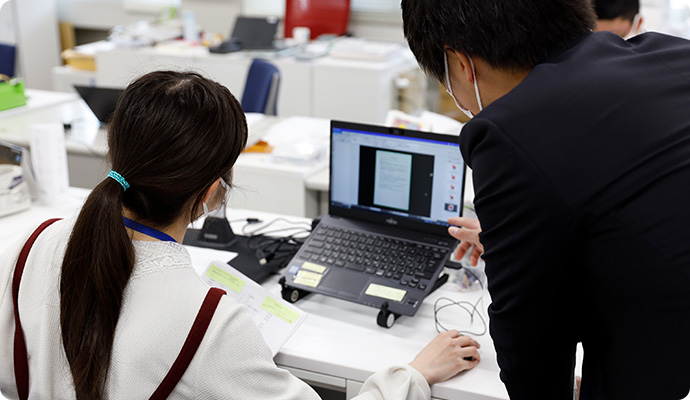
LGBTQ
Starting in FY2023, we have conducted a variety of activities both inside and outside the company with the aim of creating an environment in which all employees, both LGBTQ and non-LGBTQ, can work actively. We are working to promote understanding of LGBTQ issues by disseminating information, using our in-house pro bono system, planning DE&I DAY events, sponsoring external events (PRIDE IN KYOTO 2023), and providing training to management department staff.
Mid-career Recruitment
Corporate competition is intensifying due to ongoing globalization and other factors. For companies’ lasting growth, responsiveness to change, speedy execution, fresh viewpoints, and new ways of thinking are becoming ever more important. To obtain such qualities together with high levels of expertise, leadership skills, broad perspectives, and a breath of fresh air, Nippon Shinyaku actively turns to mid-career hires in the hope that they will lead to organizational cultural reform and corporate value enhancement. The company’s number of mid-career hires has been increasing year after year, with positive results in all job types and fields.
Supporting Senior Employees Remaining Active
Nippon Shinyaku has adopted a continued employment (rehiring) system that enables employees past the legally prescribed retirement age to continue working at the company up to the age of 65. The system allows senior employees to always keep mobilizing at Nippon Shinyaku their skills, abilities, and experiences accumulated at the company. They can also design their modes of working as they wish, according to their health, family situation, and their lifestyles. Passing one’s experience and expertise to younger generations of employees and instructing them are also important tasks required of rehired senior employees. Their treatment for the following year is determined based on fair appraisal of the execution of daily duties and the achievement of personal goals set in function of workplace goals. Rehired senior employees thus keep their motivations high to continue working.
Support for work-life balance
With the revisions to the Childcare and Caregiver Leave Act in April 2022, Nippon Shinyaku’s president released an internal message encouraging the utilization of childcare leave so that all who desired could make use of such leave with peace of mind. In addition, Nippon Shinyaku now provides paid leave for a portion of childcare leave (up to 14 days total paid leave when taking childcare leave for five consecutive business days or more). As a result, the childcare leave uptake rate was 76.1% in FY2022. In addition to a 100% uptake rate among eligible women, the uptake rate among eligible men rose to 69.3%, up from 50% in FY2021.
A workplace where employees trust and understand each other and can take childcare leave with peace of mind is a workplace that is comfortable not only for employees raising children but all employees who may have personal circumstances necessitating leave-taking. In order to realize such a workplace, Nippon Shinyaku will create a culture of mutual acceptance of each other’s situations and circumstances, and of helping each other.
Odawara Central Factory
The Odawara Central Factory is working with Kanagawa Prefecture, Odawara City, and local companies to promote DE&I through various initiatives such as a women’s advancement project and various forms of support for employees with disabilities, and these efforts have been recognized by external organizations (D&I Kanagawa Members and Odawara L Yell).
Employees by type*1
| Classification | Units | FY2020 | FY2021 | FY2022 | FY2023 | FY2024 |
|---|---|---|---|---|---|---|
| 1. Employees who retired voluntarily within the year | % | - | 1.73 | 2.51 | 2.3 | 2.7 |
| 2. Non-regular employees | % | - | 13.38 | 13.76 | 14.2 | 14.6 |
| 3. Employees with disabilities | % | - | 1.67 | 1.76 | 1.8 | 1.8 |
| 4. Female employees | % | - | 33.75 | 34.52 | 35.3 | 35.6 |
- *1:Percentages throughout the Nippon Shinyaku Group
Recognition by external parties
Eruboshi Certification
In FY2024, we received the highest three-star Eruboshi certification from the Ministry of Health, Labour and Welfare as an outstanding company that promotes women’s empowerment in the workforce.
Kurumin Certification
In 2007 and 2012, we were granted Kurumin certification by the Ministry of Health, Labour and Welfare as a childcare support company.
PRIDE Index
In FY2025, Nippon Shinyaku was certified as “Gold” in the “PRIDE Index 2025” which evaluates initiatives related to sexual minorities such as LGBTQ.









